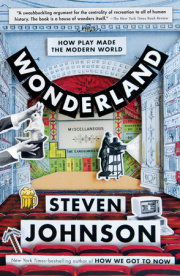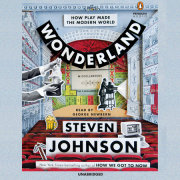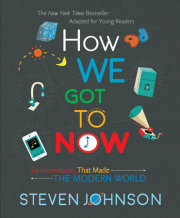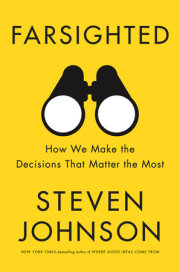1
Fashion and Shopping
The Calico MadamsThe sea snail
Hexaplex trunculus lives in shallow waters and tidal pools along the coast of the Mediterranean, and along the shores of the Atlantic, from Portugal down to the western Sahara. To the untrained eye, the murex snail, as it is also called, looks like an ordinary mollusk, housed in a conical shell ringed by bands of spikes. Millions of years ago, the snail evolved a kind of bioweapon used to sedate prey and defend itself against predators: an inky secretion that contains a rare compound called dibromoindigo. Almost four thousand years ago, the Minoan civilization based in the Aegean islands discovered that the murex snail secretion could be used as a dye to create one of the rarest of shades: the color purple.
Over time, the purple dye took on the name of a town in southern Phoenicia, Tyre, where it was mass-produced. The exact procedure for manufacturing Tyrian purple is unknown today, although Pliny the Elder included a fragmentary recipe in his
Natural History. Modern attempts to re-create the dye suggest that more than ten thousand snails were required to produce just one gram of Tyrian dye. But if the production techniques remain a mystery, the historical record is clear about one thing: Tyrian purple endured as a symbol of status and affluence for at least a thousand years. Bands of Tyrian purple were woven into the tunics of Roman senators; a child conceived by one of the emperors of Byzantium was given the honorific
Porphyrogenitus—literally, “born in the purple.” Over the millennium that passed from the age of the Phoenicians to the fall of Rome, an ounce of Tyrian purple dye was worth significantly more than an ounce of gold, a valuation that compelled sailors to explore the entire coastline of the Mediterranean for colonies of murex snails.
Eventually, though, the supply of
Hexaplex trunculus in the Mediterranean could not keep up with the demand for Tyrian purple, and a few intrepid Phoenician sailors began to contemplate more ambitious voyages in search of the mollusk, beyond the placid waters of the inland sea, out onto the gray, turbulent waves of the Atlantic itself. The Phoenicians had already passed through the Strait of Gibraltar in search of alluvial tin deposits, their distinctive cedar-planked ships, powered by thirteen oarsmen on each side, hugging the coast of Spain through waters that, technically speaking, belonged to the Atlantic. But it was the murex snail that compelled them to take on the towering waves and uncharted waters of the open ocean. They ventured down the coast of North Africa, where they eventually discovered a bounty of sea snails that would keep the aristocracy cloaked in purple well into the Dark Ages. The legacy of these voyages -extends far beyond simple fashion. The passage out of the Mediterranean into the vast mystery of the Atlantic marked a true threshold moment in the history of human exploration. “The Phoenicians’ now-proven aptitude for sailing the North African coast was to be the key that unlocked the Atlantic for all time,” Simon Winchester writes. “The fear of the great unknown waters beyond the Pillars of Hercules swiftly dissipated.” Think of all the ways the world would be transformed by vessels launched from Mediterranean countries, exploring the Atlantic and beyond. Those vessels would eventually leave in search of gold, or religious freedom, or military conquest. But the first siren song that lured them onto the open ocean was a simple color.
Garment design has driven technological innovation from the very beginning of human existence. Shears, sewing needles, and scrapers for converting animal skins into protective coverings for the body are among the oldest tools recovered from the Paleolithic age. To be sure, much of that innovation was utilitarian in nature. Ascots and hoop skirts aside, most clothing has some functional value, and certainly our ancestors fifty thousand years ago were making clothes with the explicit aim of keeping warm and dry and protected from potential threats. The fact that so much technological innovation—from the first knitting needles to hand looms to the spinning jenny—has emerged out of textile production can seem, at first glance, more a matter of necessity’s invention. And yet the archeological record is replete with early examples of purely decorative toolmaking: a shell necklace discovered in the Sikul Cave in Israel was crafted more than a hundred thousand years ago. As soon as humans became toolmakers, they were making jewelry.
Whatever mix of playfulness and practicality drove early human garment design, the invention of Tyrian purple announced a fundamental shift toward delight and surprise—a shift, in a sense, from function to fashion. No one
needs the color purple. It does not protect you against malaria, or supply useful proteins, or reduce the chances that you will die in childbirth. It just looks nice, particularly if you live in a world where purple garments happen to be rare.
You might reasonably object at this point that those Phoenician snail wranglers—and the oarsmen that first took them past the Strait of Gibraltar—were motivated by financial gain, and not some sublime aesthetic response to purple itself. That is certainly the -canonical way of telling it. As soon as we invented liquid currencies, human beings were suddenly willing to take on improbably -ambitious and dangerous schemes if the price happened to be right. People left the safety of the Mediterranean because there was money in it—a -motivation that was certainly powerful, but not particularly newsworthy.
A comparable argument might be made for the importance of status in the display of those purple garments. Humans evolved in hierarchical societies and most of us acknowledge that status-seeking is a common, if sometimes regrettable, driver of human behavior. The Phoenician aristocracy wanted to dye their clothes in shades of Tyrian purple so they could display their superiority over the commoners, and they were willing to pay for the privilege. Again, the causal chain is a familiar one: people will go to great lengths to satisfy the needs of the ruling elite if they are amply compensated for their labor. The fact that this labor involved harvesting thousands of snails may be an intriguing historical yarn, but does it really tell us anything new about the deep-seated forces that drive historical change?
With all due respect to Occam’s razor, I think in this case the simpler story is not correct, or at least it fails to include the most interesting part of the explanation. The financial gain or status symbols were secondary effects; the initial fixation with purple was the prime mover. Take away the purely aesthetic response to the Tyrian dye, and the whole chain of exploration, invention, and profit falls apart. This turns out to be a recurring pattern in the history of play. Because delightful things are valuable, they often attract commercial -speculation, which funds and cultivates new technologies or markets or geographic exploration. When we look back at that process, we tend to talk about it in terms of the money and markets or the vanity of the ruling elite driving the new ideas. But the money has its own masters, and in many cases the dominant one is the human appetite for surprise and novelty and beauty. If you dig past the archeological layers of technological invention, profit motive, conquest, and -status--seeking, you will often find an unlikely stratum that lies beneath the more -familiar layers: the simple pleasure of a new experience—in this case, the red and blue cones of our retinas registering a strange hybrid shade almost never found in nature. Somehow the story gets cast in the retelling as a tale of heroic inventors or efficient capital markets or brutal exploitation. That initial moment of delight becomes an afterthought, a footnote to the master narrative.
Nowhere is this oversight more glaring than in the story behind the greatest technological upheaval of modern times: the industrial revolution.
In the last few decades of the seventeenth century, a new pattern became visible—arguably for the first time in history—on the streets of a few select neighborhoods in London: St. James, Ludgate Hill, Bank Junction. A row of shops, each offering tantalizing collections of fabric, or jewelry, or home furnishings, clustered together on a few city blocks. The shopfronts featured large glass window displays, with merchandise arranged in visually arresting styles. The interiors were festooned with pillars, elaborate mirrors and lighting, sculpted cornices, and draperies. An observer from the early 1700s described them as “perfectly gilded theaters.”
All of this theatrical elegance was designed to create a new kind of aura around the simple act of buying goods. Earlier in the seventeenth century, shopping galleries like the New Exchange and Westminster Hall had created bustling, immersive spaces for commercial transactions, but the new shops added a measure of grandeur and elegance that made the galleries seem cramped and oppressive by comparison. In the exchanges, each vendor’s space was small and largely unfurnished, closer to the stalls of a traveling fair or street peddlers. The new shops created a much more sumptuous environment, as though the consumer were entering the drawing room of a minor lord instead of bargaining with a street hawker. For the first time, the design of the shop became a part of the marketing message. Indeed, in an age that predates the modern craft of advertising, those shop designs were among the very first forms of marketing ever concocted. “The seductive design of shops was intended to encourage customers to stay and to look around, to see shopping as a leisurely pursuit and an exciting experience,” writes historian Claire Walsh. “The more time a customer spent in the shop, the more attentively and persuasively they could be served, and in this sense the design of the shop was very much a part of the sales process.” They made the act of shopping an end, and not just a means.
Some contemporary observers, mostly men, denounced the new shops as palaces of deception, designed to weave a spell over their customers. Describing the new fashionable shops in the resort town of Bath in the early 1700s, Abbé Prévost complained that they took advantage of “a kind of enchantment which blinds everyone in these realms of enjoyment, to sell for their weight in gold trifles one is ashamed of having bought after leaving the place.” In his 1727 survey of British commercial practice,
The Compleat English Tradesman, Daniel Defoe devoted an entire chapter to the new practice of outfitting shops with such lavish trappings, a custom that appears to have baffled Defoe: “It is a modern custom, and wholly unknown to our ancestors . . . to have tradesmen lay out two-thirds of their fortune in fitting up their shops . . . in painting and gilding, fine shelves, shutters, boxes, glass-doors, sashes, and the like,” he wrote. “The first inference to be drawn from this must necessarily be, that this age must have more fools than the last: for certainly fools only are most taken with shows and outsides.”
Defoe ultimately decided that there must be some kind of functional motive behind these seemingly excessive displays: “Painting and adorning a shop seems to intimate, that the tradesman has a large stock to begin with; or else the world suggests he would not make such a show.” Defoe’s perplexity here is almost touching: you can see his mind working in overdrive to come up with a logical explanation for the frivolities of fine shelves and sashes. From our modern perspective, we can see clearly how the messaging embodied in the lavish shop decor obviously signaled more than just a large inventory; it created an envelope of luxury and high fashion that elevated the act of shopping itself into a form of entertainment. The consumers flocking to these new commercial spaces weren’t just there for the goods they could purchase. They were there for the wonderland of the space itself.
Where shopping for clothes had previously been a straightforward, no-frills series of exchanges, bartering with street vendors or tradesmen— -no different from buying eggs or milk—now the practice of browsing and “window shopping” became its own sought-after experience. Before the rise of these lavish London shops, one went to market when one had something specific to purchase. Bazaars and open-air markets existed, of course, but they lacked the sumptuous displays of these new London shops. These “perfectly gilded theaters” transformed the journey of shopping into its own reward. A 1709 contributor to
Female Tatler describes the phenomenon—now ubiquitous in the developed world—with fresh eyes: “This afternoon some ladies, having an opinion of my fancy in cloaths, desired me to accompany them to Ludgate-hill, which I take to be as agreeable an amusement as a lady can pass away three or four hours in.”
The language here—“agreeable amusements”—doesn’t fully do justice to the eventual magnitude of the transformation it was describing. It was a subtle shift, hard to notice if you weren’t a proprietor of one of these shops, or a customer. To the untutored eye, those shops seemed like just a minor twist on the peddlers and tradesmen who had sold goods in the city for hundreds of years. In fact, the shift was so subtle that very few records were kept to document its existence. Like so many cultural revolutions that would follow, the modern experience of shopping trickled into the world as a minor subculture, enjoyed by a tiny fraction of the overall population, ignored by the mainstream—until one day when the mainstream woke and found that it had been profoundly redirected by this strange new tributary. Every now and then, the creek floods the river.
Copyright © 2016 by Steven Johnson. All rights reserved. No part of this excerpt may be reproduced or reprinted without permission in writing from the publisher.















